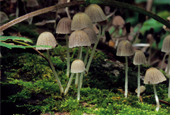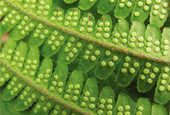View this article in another language
- 한국어
- English
- 日本語
- 中文
- العربية
- Español
- Français
- Deutsch
- Pусский
- Tiếng Việt
- Indonesian
Flora & Fauna of Korea #9
Korea.net publishes a series of articles, “Nature You Meet in the Mountains,” about the peninsula’s mushrooms, insects, trees and herbs & flowers.
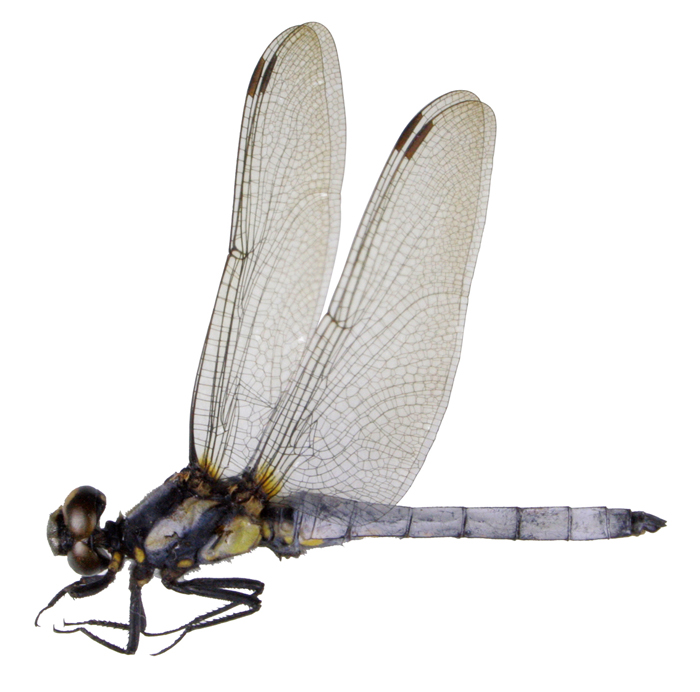
Insects
Name: 중간밀잠자리 junggan miljamjari
Scientific name: Orthetrum japonicum internum McLachlan
Distribution: Korea, China, Japan, Taiwan, India
This dragon fly has an average abdomen length of 27 millimeters and a wingspan of 33 millimeters. The thorax and abdomen of the males are covered in a white powder. They are very similar to the mil jamjari, introduced in part 8 of the series, whose scientific name is Orthetrum albistylum speciosum (Uhler). The frontal tubercle is black and the forehead is yellow-green. The abdomen is light gray with some black colors along the edge. The wings are transparent and have tiny yellow patterns on the ventral side. It has dark brown wing veins with a yellow or brown pattern along the edge.
Ecology: The adults can be seen from early May to early August. The mating time is about an hour. After mating, the females spawn alone.
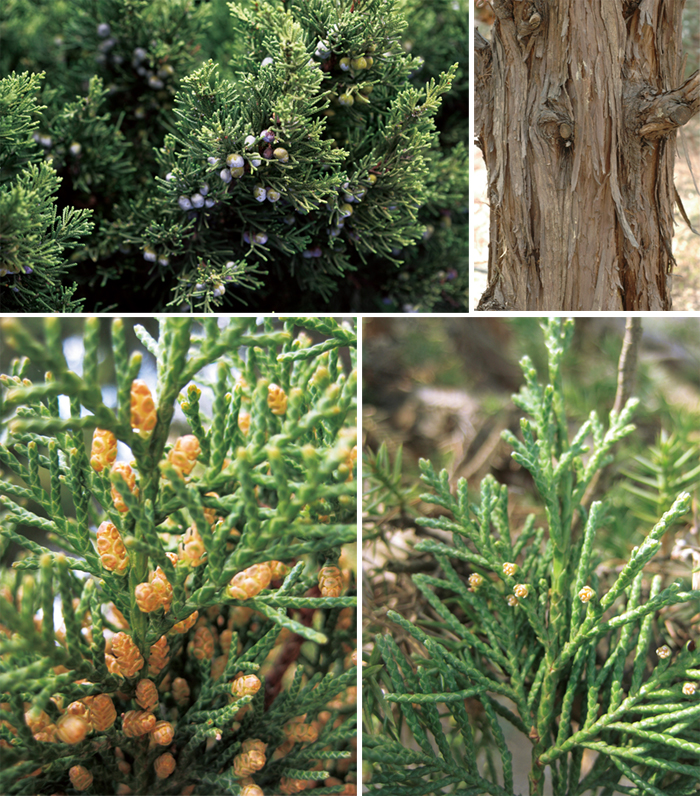
Trees
Name: 향나무/ 노송나무 hyang namu/ nosong namu
Scientific name: Juniperus chinensis L.
Type: coniferous evergreen shrub
Blooming season: April
Bearing season: the following October
Distribution: nationwide, with most specimens found on Ulleungdo
Normally found on Ulleungdo, this juniper grows as high as 20 meters. One-year-old trees have green bark. Three-year-old trees have dark brown branches. Leaves are either opposite superposed or whorled and arranged in ranks of four or six. Scale leaves start to grow when it is seven to eight years old. It is diamond-shaped and has a blunt tip. This monoecious tree gives bloom to a light purple male flower and a round-shaped female flower. It bears blue-black berry-like cones.
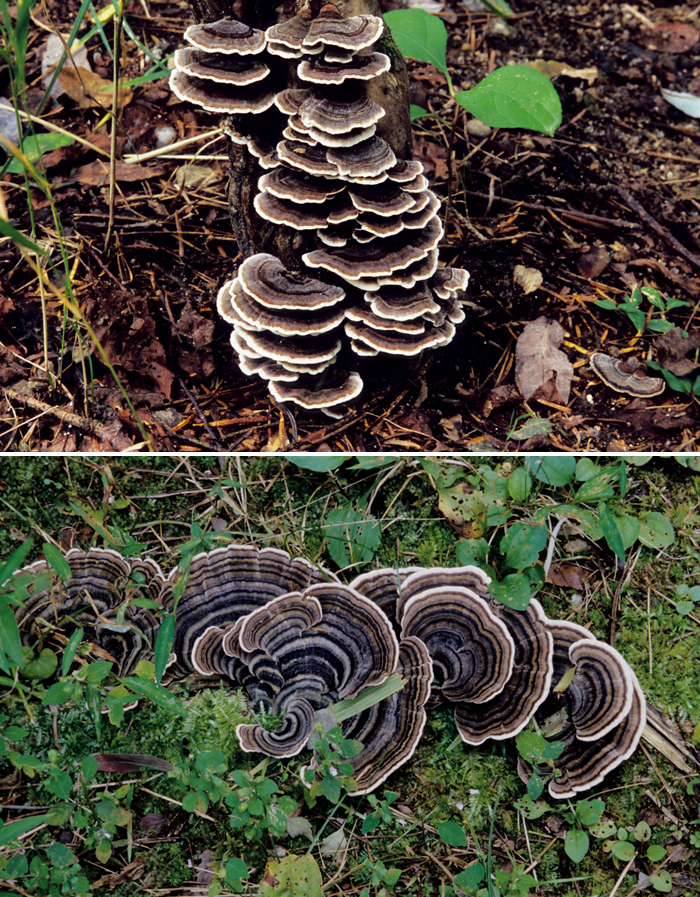
Mushrooms
Name: 구름버섯 gureum beoseot/ Cloud Mushroom
Scientific name: Trametes versicolor (L.) Lloyd
Type: saprophile spore
Print: white
Edible, and can be used for medicinal purpose
This mushroom grows overlapped in clusters on dead or fallen conifers or broad-leaved trees. It causes a white rot on both hardwoods and conifers. The semi-circular pileus has an average diameter of 1 to 5 centimeters and is 1 to 2 centimeters thick. The surface is normally black and rings of white, yellow, brown, red, green and black are visible. The short hairs grow densely. The tissue is white and coriaceous. The hymenium’s tube is about 1 to 2 millimeters deep. It normally has 3 to 5 round holes.
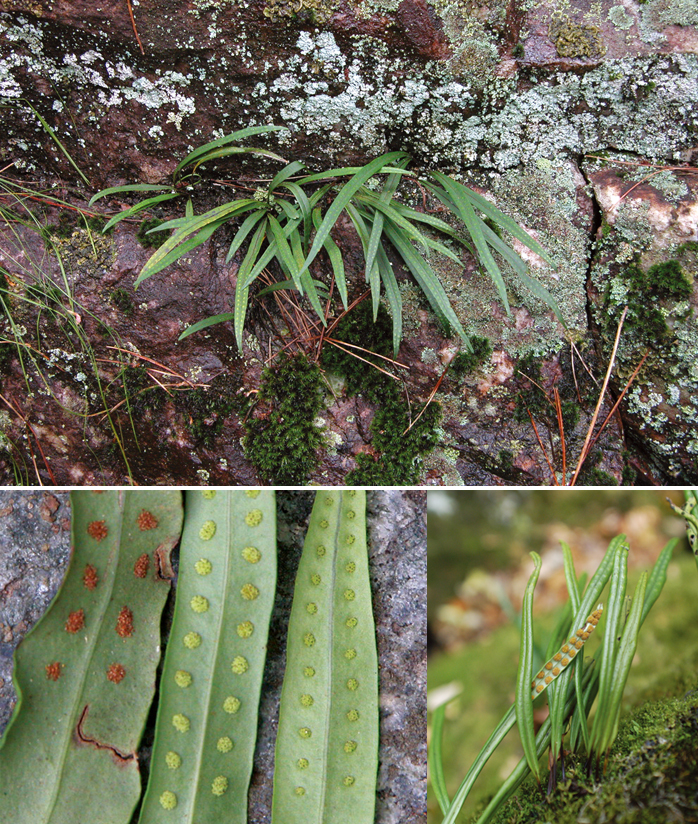
Herbs & Flowers
Name: 산일엽초 sanilyeopcho
Scientific name: Lepisorus ussuriensis (Regel & Maack) Ching
Full bloom: propagation by spore
Distribution: mountains nationwide
This perennial sessile can be found on rocks and trees. The long and fine subterranean stem is about 1.5 to 3 millimeters in diameter. The squama lingers for a long time. It is brown in color and is shaped like an oval isosceles triangle. It has a lanceolate leaf, which means that it looks like a lance, tapering to a point at each end. The edges can be flat or can be turned inside out. The squama is flat and sparsely scattered along the edge. The sorus are round and are in a bilinear order on the leaf.
*This series of articles about Korea’s insects, trees, mushrooms and herbs & flowers has been made possible with the cooperation of the Korea National Arboretum.
Korea.net publishes a series of articles, “Nature You Meet in the Mountains,” about the peninsula’s mushrooms, insects, trees and herbs & flowers.

Insects
Name: 중간밀잠자리 junggan miljamjari
Scientific name: Orthetrum japonicum internum McLachlan
Distribution: Korea, China, Japan, Taiwan, India
This dragon fly has an average abdomen length of 27 millimeters and a wingspan of 33 millimeters. The thorax and abdomen of the males are covered in a white powder. They are very similar to the mil jamjari, introduced in part 8 of the series, whose scientific name is Orthetrum albistylum speciosum (Uhler). The frontal tubercle is black and the forehead is yellow-green. The abdomen is light gray with some black colors along the edge. The wings are transparent and have tiny yellow patterns on the ventral side. It has dark brown wing veins with a yellow or brown pattern along the edge.
Ecology: The adults can be seen from early May to early August. The mating time is about an hour. After mating, the females spawn alone.

Trees
Name: 향나무/ 노송나무 hyang namu/ nosong namu
Scientific name: Juniperus chinensis L.
Type: coniferous evergreen shrub
Blooming season: April
Bearing season: the following October
Distribution: nationwide, with most specimens found on Ulleungdo
Normally found on Ulleungdo, this juniper grows as high as 20 meters. One-year-old trees have green bark. Three-year-old trees have dark brown branches. Leaves are either opposite superposed or whorled and arranged in ranks of four or six. Scale leaves start to grow when it is seven to eight years old. It is diamond-shaped and has a blunt tip. This monoecious tree gives bloom to a light purple male flower and a round-shaped female flower. It bears blue-black berry-like cones.

Mushrooms
Name: 구름버섯 gureum beoseot/ Cloud Mushroom
Scientific name: Trametes versicolor (L.) Lloyd
Type: saprophile spore
Print: white
Edible, and can be used for medicinal purpose
This mushroom grows overlapped in clusters on dead or fallen conifers or broad-leaved trees. It causes a white rot on both hardwoods and conifers. The semi-circular pileus has an average diameter of 1 to 5 centimeters and is 1 to 2 centimeters thick. The surface is normally black and rings of white, yellow, brown, red, green and black are visible. The short hairs grow densely. The tissue is white and coriaceous. The hymenium’s tube is about 1 to 2 millimeters deep. It normally has 3 to 5 round holes.

Herbs & Flowers
Name: 산일엽초 sanilyeopcho
Scientific name: Lepisorus ussuriensis (Regel & Maack) Ching
Full bloom: propagation by spore
Distribution: mountains nationwide
This perennial sessile can be found on rocks and trees. The long and fine subterranean stem is about 1.5 to 3 millimeters in diameter. The squama lingers for a long time. It is brown in color and is shaped like an oval isosceles triangle. It has a lanceolate leaf, which means that it looks like a lance, tapering to a point at each end. The edges can be flat or can be turned inside out. The squama is flat and sparsely scattered along the edge. The sorus are round and are in a bilinear order on the leaf.
*This series of articles about Korea’s insects, trees, mushrooms and herbs & flowers has been made possible with the cooperation of the Korea National Arboretum.
